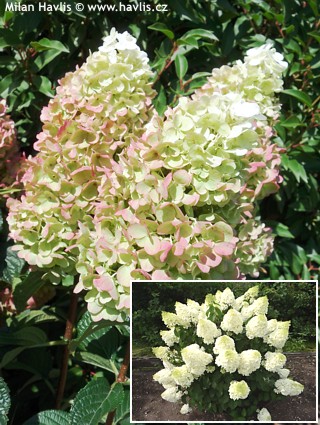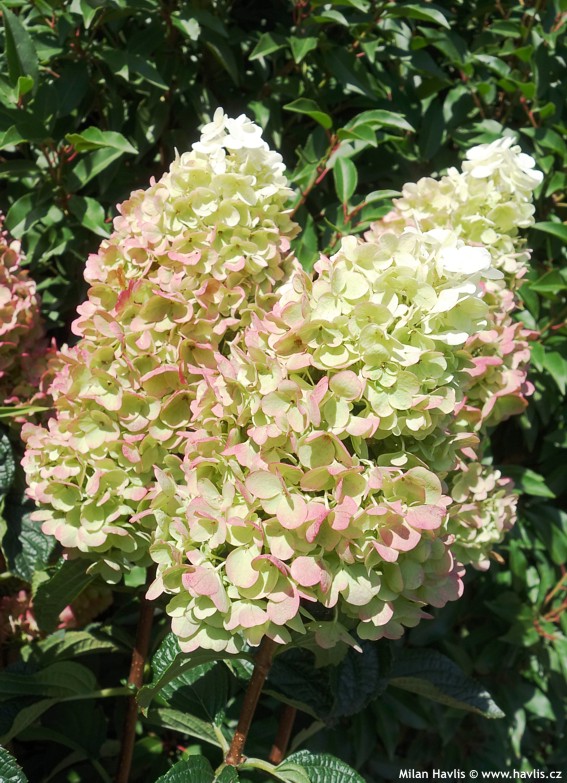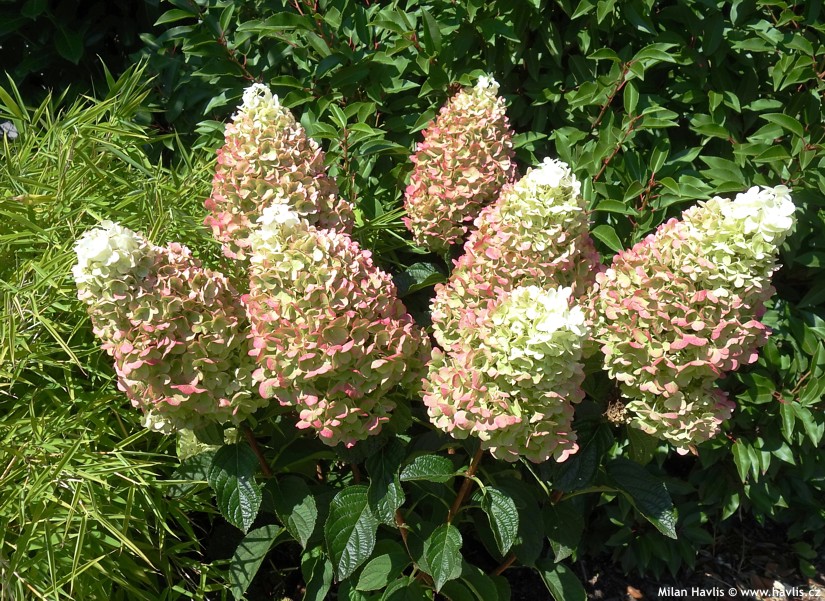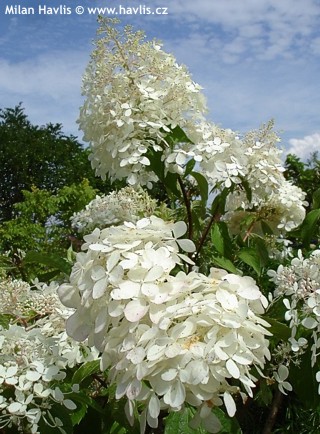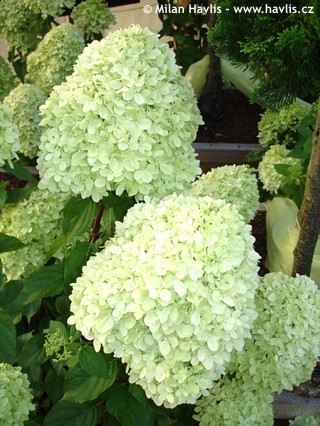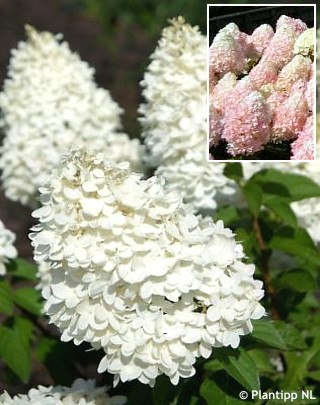Hydrangea paniculata 'SILVER DOLLAR' panicle hydrangea
size/type
medium-sized shrub,medium-sized shrub
usual height
1-1,3m
usual width
1-1,8m
leaves
deciduous broadleaf
colour of leaves
flowers
showy
colour of flowers
blooming time
July-October
location
full to partial sun
soil type
any (acidic to alkaline)
soil moisture requirements
evenly moist (dislikes drought)
USDA zone (lowest)
4 (down to -34°C)
winter protection
for zone 5+6

for zone 7

categorized
Description of the plant:
Silver Dollar is another jewel among panicle hydrangeas of the new millennium. The truth is that it lacked the massive marketing campaign as for example Limelight® hydrangea, however, its beauty and health will prove it deserves the same winners' level. Bred and selected among many seedling by a Dutch plantsman Peter Zwijnenburg at the turn of the century, for its outstanding excellence and performance it gained the AGM prize (Award of Garden Merit) by the British Royal Horticultural Society in 2008.Silver Dollar hydrangea makes large panicles composed mostly of sterile flowers (those are the ones with bigger petals). Panicles come out from mid July and change from light green to almost pure white later on, turning very light pink in late summer and early autumn. They hold well on dark crimson brown stems in both wind and rain. Deciduous leaves are ovate to oval, pointed, deep green, and very disease resistant. It grows fast, forming a compact, moderately spreading shrub.
It will grow in almost any soil type, preferably humus-rich, moist soil that is not too heavy or shallow. Once established it does not need extra watering like big-leaf hydrangeas. Full sun is best but it will grow in shade, too. Feeding will enhance flower size. We recommend regular pruning every spring before the buds begin to swell. By cutting at least two thirds of previous year’s growth you will get a strong shrub with large flowers and a regular shape. It is hardy to at least -34°C (USDA zone 4).
Last update 09-01-2017
QUICK PRICE OVERVIEW
CURRENTLY SOLD OUT
WANT TO TRY A SIMILAR PLANT?












